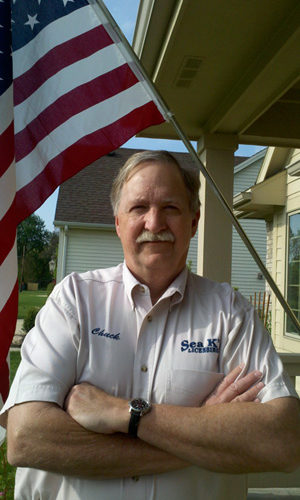As your ship arrives in port after an extremely lengthy voyage, your thoughts revolve around your family and a well-deserved rest. On a smaller yet very significant scale, you ponder your next merchant mariner credential upgrade. You volunteered for an extended shipboard tour to ensure you possessed sufficient sea service to qualify for that elusive upgrade. Thoughts of added responsibility and increased financial stability for your family resulted in increased motivation.
You start the process by submitting a comprehensive application package to your local Regional Examination Center. You’ve counted and recounted your sea days to ensure a smooth process. After several weeks of heightened anticipation, the white envelope from the National Maritime Center arrives nestled between your electric and gas bills. Your thoughts turn to increased study time for the examinations and another separation from your family. As you begin to read what you anticipated would be your Approval To Test letter, your maritime world is suddenly turned upside down. Your “evaluator” has determined you have not provided adequate sailing experience to qualify for the upgrade. Your initial reaction is to question the “evaluator’s” ability to count, followed by dismay and eventually second-guessing your own ability to count and understand a confusing set of federal regulations.
This scenario continues to haunt all levels of the maritime industry on a daily basis. Why has the evaluation of sea service become so complicated and how do we fix it? It’s extremely easy to place the entire blame at the feet of the Coast Guard National Maritime Center. I do believe they are the primary cause of the problems associated with sea service evaluations. How can you adequately regulate an industry you know very little or, in many cases, nothing about? I believe more comprehensive training at the National Maritime Center would significantly reduce the problem. The majority of first level evaluators are actually check-off-list people. If they are able to answer “yes” to each question on the appropriate checklist, many new credentials are being issued in a relatively short period of time. The problems arise when they are tasked with evaluating non-traditional sea time. As the maritime industry becomes more diverse, not every shipboard position falls into a preconceived space on a checklist. Though past problems at some Regional Examination Centers are well documented, why can’t we utilize that local expertise to train some of the NMC staff to better understand the industry they are attempting to regulate? The Coast Guard Marine Inspection Program used to assign inspectors to “industry training” in an attempt to better understand the inner workings of the maritime industry. Those individuals returned to their unit with extremely valuable knowledge which they shared with other inspectors. I realize it’s impossible to send each evaluator at the National Maritime Center out in the field, however I strongly believe more exposure to the industry and a better understanding of the varied tasks performed by mariners would help in the sea time evaluation process. It’s time for the evaluators to understand “deckineer” is an actual maritime position.
I don’t believe it should be the maritime industry’s responsibility to train the evaluators at the National Maritime Center. However, I do believe with our help we can reduce the number of less-than-stellar evaluations which should result in a less painful process for many individuals. The use of more traditional maritime titles when generating sea service letters or completing certificates of discharges would go a long way in assuring mariners receive proper sea time credit. Shipboard positions such as DEU, though widely recognized and understood by members of the maritime industry, is foreign to many of the National Maritime Center evaluation staff. Because it does not appear in the Code of Federal Regulations or on their checklist, the mariner can anticipate an “Additional Information” (AI) letter when his/her file is evaluated. The letter usually requires a breakdown of days served in both the deck and engineering departments. This detailed information is rarely available. Many of the non-traditional maritime titles are driven by contractual agreements with unions or other outside entities. Is it possible to utilize those job descriptions for payroll and retirement credit but utilize more traditional ratings when generating sea service letters?
As an industry, we need to acknowledge that the old Coast Guard is gone. The days of sitting down face-to-face with your evaluator to discuss your sea service are a thing of the past. The Coast Guard has indicated the centralization of the maritime licensing program was a result, in part, of the maritime industry’s complaints about the performance level at some Regional Examination Centers. They also assured us the move would result in more consistent evaluations. I’m not convinced yet we can say “mission accomplished.”
Charles “Chuck” Kakuska is president of Sea K’s Maritime Licensing Service in Temperance, Mich. A veteran of 25 years in the Coast Guard, Kakuska is former chief of the Regional Examination Centers in Toledo, Ohio, and Portland, Ore. He has more than 30 years of licensing experience.

